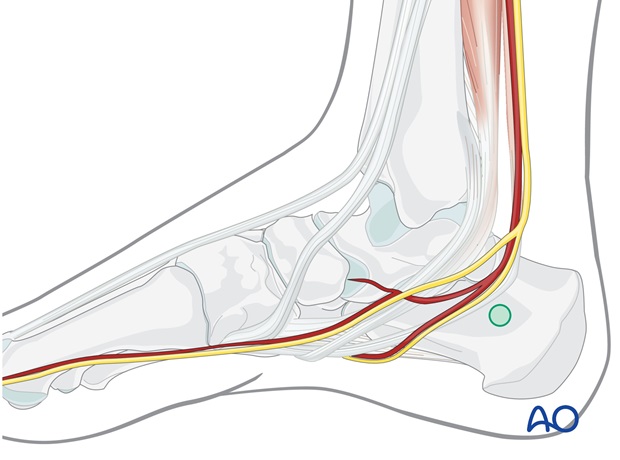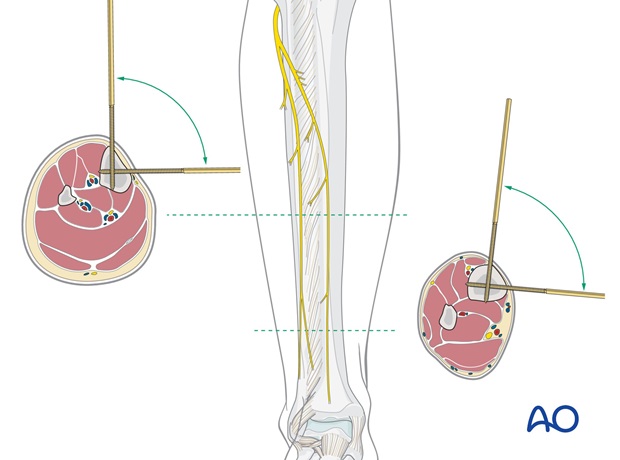Safe zones in the malleoli for percutaneous instrumentation
1. General consideration
Inserting percutaneous instrumentation such as pins or transfixion wires through safe zones reduces the risk of damage to neurovascular structures.
2. Insertion of a calcaneal Steinmann pin
A Steinmann pin is inserted, from the medial side, through the calcaneal tuberosity. It is vital to avoid the posterior tibial neurovascular bundle behind the medial malleolus. If swelling permits, locate the posterior tibial pulse: if this is not palpable with certainty, examine the pulse of the uninjured leg and use its position as a guide to the probable path of the bundle at the injured side.

3. Safe zones for screw insertion into the tibia
For the insertion of the two tibial Schanz screws in the lower half of the shaft, there is a wide safe zone from direct anterior to direct medial. These screws are generally inserted anteriorly as medial metalwork may cause problems with the other leg.
Take care not to penetrate the posterior cortex excessively as this may impale the tibialis posterior muscle and may even endanger the posterior neurovascular bundle.

4. Screw insertion into the base of the fourth metatarsal
A small Schanz screw is threaded into the base of the fourth metatarsal. The extensor tendons should be avoided and the two safe corridors are between the extensor tendons to the fourth and fifth toes, or between those to the third and fourth toes.
Overpenetration of the plantar cortex may endanger important plantar structures: Insert the screw carefully by hand (never with a power tool!).














